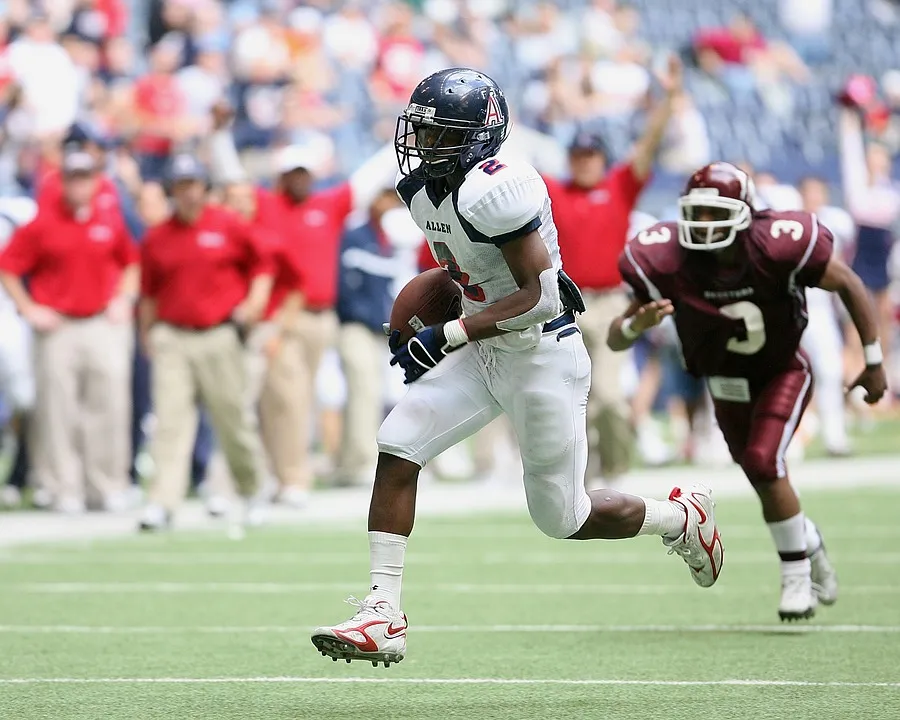On the last edition of "The Influential Mind Made me Think", I talked about how stress makes people more aware of negative cues around them. Furthermore, it makes people give a greater weight to these cues compared to when they are relaxed. In today's edition, I will talk about a possible outcome resulting from the stress generated by a failure. Such outcome is backing up into "playing it safe".
In The Influential Mind, Tali Sharot mentions how she is a fan of the late 80's, early 90's science-fiction series Quantum Leap. In the show, Scott Bakula as Dr. Sam Beckett, a physicist, would leap in space-time to fix historical mistakes. All during the last chapter, Tali Sharot she has been "leaping" from one place in time-space to another in order to give examples of what happens to our mind under threat. For the purpose of this post, we will start by leaping to 2007 Berkeley, California.
The University of California Golden Bears were on a five game winning streak. During the beginning of the season to just before the match against Oregon State they had climbed from position 15 to 2 nationwide. This is the highest ranking they had had since 1951. But then the match against Oregon State happened. The Golden Bear's quarterback, Nate Longshore had been injured two weeks prior to the game. Tedford decided Longshire was not back in shape for the game and call Kevin Riley, an inexperienced backup quarterback, on to the field. The game was tight and it came down to the last play. During the last play, the Bears found themselves unable to score and lost the game. This was the starting point of a prolongued journey downhill for the Bears and Tedford.

Such events generated stress and pressure on the coach. He had to perform on the following games. What were the errors made on the Oregon State match? To him, it was taking risks and letting the game fall on the hands of an inexperienced player. After that, Tedford would not only never put full responsibility on a young inexperienced player, but also, he would try to play it safe to avoid any further loses. It did not work. The Bears lost five of the following six games and ended the season unranked. With each loss, the stress grew as well as his playing it safe approach. As a fan would put it: "Tedford rarely loses games by more than two touchdowns. However, it also makes it tougher for us (the Bears) to beat USC, because we might be holding ourselves back from making too many mistakes to try and take the game at the end... We have prided ourselves on close losses to USC." The fan not only described what was happening with great accuracy, but the solution was also hidden in his words.
As Chris Brown, author of The Art of Smart Football would put it: "underdog teams have little chance of winning on the merits, so what they need to do is increase the chance of a shocker: take risks, and hope their coin flips go in their favor. Maybe they won't win. Maybe they get blown out. But not taking those chances is a sure way to set their low chance of winning in stone." Then why do we see underdogs trying to play it safe time and time again? Brown tries to explain it by saying that maybe a "near win" is better to the team's morale than taking a risk or maybe the coach is trying to save his reputation by avoiding a blowout.
Tali Sharot has a different opinion on why underdogs do not take chances. Here is where the connection with the last edition of The Influential Mind Made Me Think comes. Remember how stress makes you more aware of the negative cues around you and you give them more weight than when relaxed? Well, in order to take a risk, you have to be able to envision its possibility of paying off. When you are under threat or stressed, the likelihood of you being able to envision the positive outcome becomes smaller. If anything, you would focus on the negative and envision how things could go wrong. As a result, you end up playing it safe. Coach Tedford was just human in the end.
My plan was to now explain how a person can get out of the vicious cycle of playing it safe. Not everything is lost, and there is still hope. Nevertheless I just realized I have now been writing this post for a couple of hours and I need to get back to my school responsibilities. On top of that, this is a perfect cliffhanger for the followers of this series. So, stay tuned! Next time: how to confront your instincts of playing it safe and be able to take risks when you are an underdog.
What do you think? I'd like to hear your opinions.
If you want to check out other thoughts that this awesome book has evoked, click on these past posts:
- The Influential Mind Made Me Think #1: Disinformation That The Information Era Has Created
- The Influential Mind Made Me Think #2: The Power Of Language And Ideas
- The Influential Mind Made Me Think #3: On The Facebook Scandal, Data Usage, And The Spreading Of Emotions
- The Influential Mind Made Me Think #4: On The Irrationality of Phobias
- The Influential Mind Made Me Think #5: On Agency And The Hardship Of Financial Decisions
- The Influential Mind Made Me Think #6: On How Agency Is Deeply Rooted In Us
- The Influential Mind Made Me Think #7: On The Pleasure And Pain Of Knowledge, And What We Choose To Learn
- The Influential Mind Made Me Think #8: On How Stress Changes Our Perspectives
Best,